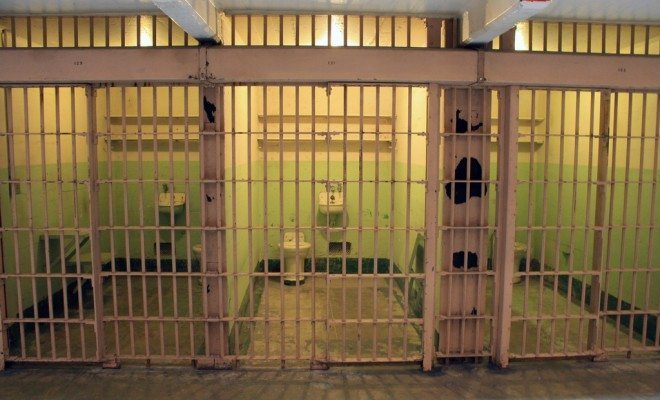 Image courtesy of [miss_millions via Flickr]
Image courtesy of [miss_millions via Flickr]
News
The Consequences of Stronger Immigration Enforcement Can Be Seen in Our Prisons
The debate over illegal immigration often focuses on enforcement–how we are going to secure our border and protect Americans–but the consequences of stronger enforcement often generally get less attention from policymakers. According to the Department of Homeland Security, Immigration and Customs Enforcement (ICE) detained 441,000 immigrants in 2013. A BuzzFeed News analysis of data from the Department of Justice found that Mexican immigrants are disproportionately detained pending deportation. This is true not only in terms of raw numbers, but also relative to detention rates from other countries–even when accounting for gender, legal representation, and those facing criminal charges.
According to BuzzFeed News,
Three-quarters of all Mexicans facing deportation on noncriminal grounds were placed in detention centers. For Guatemalans, the next most frequently detained group, the rate was 61%. For China and Cuba, longtime adversaries of the United States, the rates were 19% and 16%.
These findings are particularly striking because of how the website’s methodology looked only at people who were detained without facing criminal charges. BuzzFeed News’ article implicitly argues that the current focus on illegal immigration typically relates to immigrants coming from Mexico, and the detention disparity likely reflects an attempt to specifically deter Mexican immigration. The article also cites a Supreme Court decision, which ruled that civil detention cannot be used for deterrence or retribution–revealing a potential issue with ICE’s detention practices.
However, one thing that the analysis is unable to take into consideration is whether those who are detained have been previously deported or have criminal histories. To its credit, BuzzFeed News does acknowledge this and argues, that factors that are unaccounted for “…could explain at least part of the disparity — but probably not all of it, according to the experts consulted by BuzzFeed News.”
The article also highlights potential issues with detention when a detainee does not face criminal charges. A 2009 analysis by the Associated Press found that at one point in time more than half of those in ICE detention did not face criminal charges and had no criminal record.
In recent years, ICE has adjusted its detention policies to focus on high priority immigrants, who include criminals and repeat offenders. Jeh Jonson, the secretary of the Department of Homeland Security (DHS), issued new guidelines for the apprehension, detention, and removal of illegal immigrants to initiate a change from previous policies. DHS has also moved away from what have been called “bed quotas,” which was essentially an implicit requirement to fill every available bed in the department’s detention budget. The department’s budget required it to maintain “a level of not less than 34,000 detention beds,” which in practice became a requirement to fill nearly all of the budgeted beds in detention centers (see chart below). In an appropriations hearing this year, Secretary Johnson argued that this was no longer the department’s policy. Recent statistics also suggest that the actual number of detainees is around 78 percent of the required capacity for the first five months of the 2015 fiscal year.

Image courtesy of Congressional Research Service
Also important is the fact that convictions for immigration offenses caused a significant portion of the growth in the federal prison population. A Pew Research Center analysis of sentencing data found that between 1992 and 2012 the number of federal inmates (including citizens and non-citizens) more than doubled–going from 36,564 to 75,867. That growth is widely acknowledged and is a cornerstone of the criminal justice reform movement currently gaining momentum in the United States. But what is less known is the fact that 48 percent of the growth in federal prisoners is due to sentences for one specific offense: unlawful reentry, which in addition to other immigration offenses made up 30 percent of the federal convictions in 2012. As a result, non-citizen Hispanics make up the single largest portion of the federal prison population at 37 percent.
Tough on immigration policies are often discussed by politicians, but their effects–most notably the detention and imprisonment of immigrants–receive much less attention. Discussion of immigration should not be divorced from its costs and consequences, which despite recent progress in targeting higher priority immigrants remain significant. While supporting stronger border protections is a valid position, and may even be politically expedient, proponents should acknowledge how such a policy will affect prison populations.








Comments